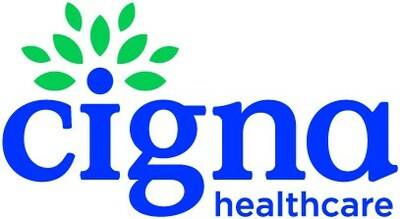Table of Contents
Offering employees affordable and all-inclusive healthcare benefits has become a challenge for small firms. Employers are increasingly seeking innovative solutions to efficiently control these costs as traditional health insurance premiums rise.
One such solution gaining popularity among small businesses is level funded health plans. These health plans offer a unique alternative to the traditional, fully insured plans commonly adopted by large corporations.
The combination of the advantages of self-insurance with the stability and predictability of fixed monthly payments makes level funded plans attractive to financially conscious businesses.
In this post, we’ll delve into this concept and explore why small businesses are embracing this approach to manage their healthcare benefit costs.
How do Level Funded Health Plans Work?
Level funded health plan is a health insurance option that combines self-funding and the stability of traditional fully insured plans. These plans minimize the financial risk linked to self-insurance while empowering employers to manage their healthcare costs.
Level funded plans are particularly popular among small to mid-sized businesses that want to enjoy the benefits of self-funding without assuming excessive risk. Here’s how the plan works:
Fixed Premium Payments
Level funded plans allow employers to pay a predetermined amount each month. There’s a fixed monthly premium covering the cost of healthcare services provided to employees.
In contrast to fully insured plans, the insurance provider sets the premium based on expected claims and administrative expenses.
Set Up a Claims Fund or Trust Account
A level funded plan operates like a self-funded plan. Instead of paying a fixed premium to the insurance provider for their employees’ healthcare, employers allocate monthly funds that are kept in a trust, accessible as needed, to cover any healthcare expenses.
When claims exceed the fund’s amount, employers are given limited liability under the stop-loss policy, as discussed below. In effect, this reduces the financial risk for small business firms.
When claims are lower than the fund’s amount, employers are refunded or use the excess to enhance the benefits provided to the employees. By assuming a portion of the financial risk, employers can potentially save money.
Inclusion of Stop-Loss Insurance
Stop-loss insurance acts as a safety net, protecting employers from catastrophic or unexpectedly high claim costs. There are two types of stop-loss insurance: specific and aggregate.
Specific stop-loss kicks in when an individual’s claims exceed a certain threshold, while aggregate stop-loss coverage protects the employer if the total claims for the group exceed a predetermined limit.

Why do Small Businesses Use Level Funded Health Plans?
Level funded health plans are gaining popularity due to their remarkable features, which are advantageous to small business firms. Here are the reasons:
1. Cost Control
A potential cost savings, or a means of cost control, is the most important reason. It allows employers to control their healthcare costs. They pay a fixed monthly premium regardless of their actual healthcare utilization.
The monthly premium is based on the expected claims and administrative costs. At year-end, if the claims are lower than expected, the employer is refunded, potentially saving costs. This provides a financial incentive to manage costs effectively.
Level funded plans can be less expensive than fully-insured plans, especially for businesses with better-than-average risk to their workforce. Employers can save 5% to 10% by switching to a level-funded plan.
2. Customization and Flexibility
Level funded plans offer more flexibility and customization compared to traditional, fully insured plans. Employers can have a plan tailored to the specific healthcare needs of their employees and workforce.
Since employers enjoy the plan’s flexibility, it affords them to balance between providing comprehensive coverage and controlling costs. Employers can customize the plan by offering different coverage options, cost-sharing arrangements, or wellness programs.
3. Transparency of Data
There’s greater transparency in healthcare costs for employers. They gain access to the breakdown of data such as claims, administrative fees, and stop-loss coverage. Also, it helps to identify high-cost claimants and analyze utilization patterns.
With access to detailed information, employers will know how the plan is used. This information can help the employer educate employees about decisions that can make the plan better.
This data-driven approach empowers employers to make better decisions, implement cost-management strategies, and take proactive steps to mitigate future cost increases
4. Access to a Broader Network of Providers
Employers can choose a larger nationwide network, possibly even an open network.
This feature is highly beneficial for small businesses whose employees may be spread across different regions. Having a larger network gives employees a wide range of options when seeking medical care, enhancing member’s satisfaction.
5. Cashflow Certainty
Associated with fixed monthly premium payments, employers can better plan their cash flows to pay for healthcare benefits costs. With the inclusion of stop-loss insurance, it certainly cushions the business against the impact of big claims.
6. Privacy
The data-driven approach of level funded health plans gives employers more control over their employees’ health information. A deeper insight into the health status of the firm’s workforce can help in business planning related to HR training and programs.
7. Risk Mitigation
Level funded plans include a stop-loss insurance policy that protects the business against significant and unforeseen expenses, such as catastrophic claims. It provides a safety net by reimbursing the employer for any claims that exceed a certain threshold.
This helps mitigate the financial risk associated with high-cost medical treatments and ensures that employers are not exposed to excessive liabilities.
8. Employee Engagement
Level funded plans foster employee engagement and cost-conscious behavior. Since employers control the plan design, they can implement wellness programs, preventive care initiatives, and employee incentives to encourage healthier lifestyles and better healthcare utilization.
9. Small to Mid-Size Employer Appeal
Level funded plans are particularly attractive to small and midsize employers who don’t have the same bargaining power as large organizations. It affords smaller firms the advantage of self-funding without the same level of risk or financial commitment as fully self-funded plans.
Nevertheless, it’s worth mentioning that level-funded plans are a form of self-insurance. It comes with many administrative costs and compliance implications when switching from a fully insured plan arrangement.

Additional Considerations for Small Businesses
While level funded health plans offer numerous advantages, small businesses should evaluate their specific needs and circumstances before making a decision. Consider these additional factors:
1. Employee Population and Health Risks
Assess the health risks and needs of the employee population. Level funded health plans may work well for businesses with relatively healthy employees, as lower claims can result in cost savings.
If the workforce tends to have a higher likelihood of significant medical expenses, it’s important to analyze the potential financial risks associated with a level funded plan.
For example, in small businesses with a significant number of older employees, this age group is more likely to have higher medical costs, and some may have major illnesses. Hence, level-funded plans may not be the best fit due to the many risks involved.
2. Cash Flow Management
Level funded health plans require employers to make consistent monthly payments, regardless of their claims. This translates to cash flows to meet these obligations throughout the year.
This monthly obligation should be analyzed in light of the business’s financial stability to handle fluctuations in healthcare expenses.
3. Stop-Loss Coverage
The stop-loss limit represents the maximum amount the employer pays in the event of high-cost claims. Reviewing the stop-loss provisions, including individual and aggregate limits, will help determine the level of financial protection the plan offers.
4. Administrative Support
Partnering with a reputable third-party administrator (TPA) is key to managing a level funded health plan effectively. TPAs handle various administrative tasks, such as claims processing, eligibility management, and providing access to provider networks.
Evaluate the services offered by different TPAs and choose which best satisfies the needs of the business.
5. Compliance and Regulatory Requirements
Be updated with relevant federal, state, and local regulations regarding health insurance. Compliance with laws such as the Affordable Care Act (ACA) and reporting requirements is crucial.
It’s best to work with a knowledgeable benefits advisor to navigate the regulatory landscape and ensure compliance.
6. Employee Education and Communication
Implementing a level funded health plan requires employee education. Employees should understand how the plan works, the benefits, and any changes to their coverage. Clear communication helps alleviate concerns and ensure a smooth transition.
7. Comparison with Other Options
Before committing to a level funded health plan, compare it with other options available on the market, including traditional fully insured plans, self-funded plans, or health insurance cooperatives. Assess the benefits, costs, and risks of the different options to make an informed decision.

For Small Businesses, Harness the Benefits of Level Funded Health Plans
Level funded health plans have become increasingly popular among small businesses as a means of managing healthcare benefit costs. It offers a unique blend of affordability and flexibility to provide competitive healthcare benefits while maintaining cost control.
We at Omega Pediatrics strive to be your perfect ally for your and your children’s healthcare needs. We will be glad to provide you with further insights for better comprehension and appreciation of level funded health plans.
FAQ
How do Level Funded Health Plans Work?
Level funded health plans combine self-funding with fixed monthly payments, offering employers a way to manage healthcare costs with minimized financial risk. Employers pay a set premium each month, with funds allocated to cover healthcare expenses.
Why do Small Businesses Use Level Funded Health Plans?
Small businesses opt for level funded plans for cost control, customization, transparency of data, access to a broader provider network, cash flow certainty, privacy, risk mitigation, employee engagement, and appeal to smaller firms seeking self-funding advantages.
Additional Considerations for Small Businesses
Before adopting level funded plans, small businesses should assess employee health risks, manage cash flow, review stop-loss coverage, ensure administrative support, comply with regulations, educate employees, and compare with other options for informed decision-making.
What is Included in Level Funded Health Plans?
Level funded plans offer fixed premium payments, claims fund or trust account setup, stop-loss insurance, cost control, customization, data transparency, provider network access, cash flow certainty, privacy, risk mitigation, and employee engagement benefits.
For Small Businesses, Harness the Benefits of Level Funded Health Plans
Level funded health plans provide affordability and flexibility for small businesses to offer competitive healthcare benefits while maintaining cost control. They offer advantages like cost savings, customization, data transparency, and risk mitigation.



